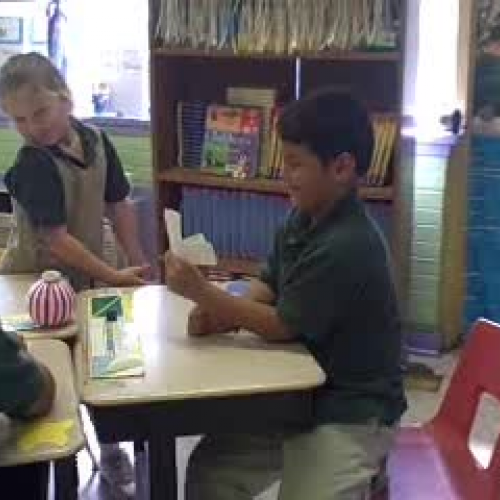
Fan-N-Pick
A Strategy for the Active Classroom
Fan-N-Pick
Strategies like Fan-N-Pick also create opportunities for students to work collaboratively. Working in a group with other students is a skill that is not only necessary as students move through their education careers, but also through their careers in life. Students need to learn to work with others, solve disagreements and conflicts that may occur in a group work setting, and how to compromise and actively contribute to a group. These are all benefits that can be seen when using many of these strategies. Fan-N-Pick allows students to switch roles so that every group member takes a turn at each role. This assures that one team member does not dominate the group, and that team members cannot "hide" and let the other team members take over the work load.
Instructional Strategies benefit students in many ways including fostering collaboration and active engagement. For more information on instructional strategies or Kagan Structures visit the website www.kaganonline.com. To better understand how the structures compare to traditional instruction and the benefits of strategy instruction, visit this article: Kagan Structures: A Miracle of Engagement.
Fan-N-Pick
Collaboration
Found on http://blog.calicospanish.com/2014/09/30/pre-teaching-strategies-work-best.html
Fan-N-Pick
Fan-N-Pick found on:
https://cdg1204.wordpress.com/Fan-N-Pick
This strategy can be used across any content area. Students could practice problems for a math skill, practice basic facts, or demonstrate how to solve a problem for math content. For reading, students could respond to questions about a story or piece of literature. In social studies students can discuss civic issues or historical events using this strategy. Science content can be supported by discussing the information for class, reviewing content, sharing ideas and questioning scientific findings.
Here is an example of how this strategy could be used in a middle school science classroom:
Content topic: Volcanoes
Purpose: Review types of volcanoes, volcanic action and effects of volcanic eruptions on Earth's landscapes.
Materials: Question cards: each set of cards will have 12 question cards about the content from the volcano unit.
Strategy implementation: Students are divided into groups of four using classroom sorting or partner pick strategy. Students will number off as student 1, student 2, student 3 and student 4. Once order has been determined, the game is on!
- Student 1: take cards and fan them out. Offer cards to student 2 and say "Pick a card, any card."
- Student 2: read the card to the group
- Student 3: answer the question on the card
- Student 4: Paraphrase or restate the answer given by student 3, clarify or check the answer, praise student for the answer given.
Round 2, rotate the cards to the right, Student 2 now offers cards to Student 3 and repeats the steps. Play continues until all cards have been answered.
Options:
- Have students create question cards as part of activity, then shuffle the cards together.
- Following activity: students blog response to the activity, discuss the successess and improvements to be made for the next round
- Students video Fan-N-Pick and post on class website as an example for future groups completing the activity
It's Your Turn!
Credits
Fan and Pick Kagan Structure. Teacher Tube. Retrieved on July 25, 2015 from http://www.teachertube.com/video/fan-and-pick-kagan-structure-55073.
Kagan, S. (2008). Kagan structures simply put. Kagan Online Magazine, Summer 2008. Retrieved on July 25, 2015 from http://www.kaganonline.com/free_articles/dr_spencer_kagan/ASK38.php.



